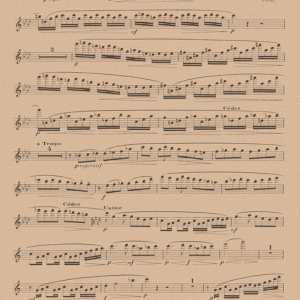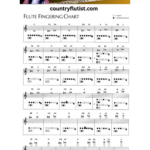 Learning to play the flute isn’t just about reading notes and producing a beautiful tone—it also involves understanding the language of music itself. Two essential concepts that every flutist should know are key signatures and flute scales. Whether you’re just beginning your flute journey or preparing for an advanced performance, mastering these concepts will unlock a whole new level of musicianship.
Learning to play the flute isn’t just about reading notes and producing a beautiful tone—it also involves understanding the language of music itself. Two essential concepts that every flutist should know are key signatures and flute scales. Whether you’re just beginning your flute journey or preparing for an advanced performance, mastering these concepts will unlock a whole new level of musicianship.
🎼 What Are Key Signatures?
A key signature is a set of sharp (#) or flat (♭) symbols placed at the beginning of a line of music, right after the clef. It tells the performer which notes will be consistently sharp or flat throughout the piece and establishes the key of the music. For example, one sharp (F♯) means the piece is in the key of G major (or E minor).
Key signatures are important because they:
-
Determine the scale and tonality of a piece
-
Help you know which notes to play or adjust
-
Make reading music quicker and more intuitive
🎵 Why Scales Matter for Flutists
Flute scales are the building blocks of melodies. Practicing scales improves finger coordination, intonation, tone, and overall fluency on the flute. Each major or minor key has a corresponding scale, and learning all 12 major scales (and their minor counterparts) gives you the confidence to play in any key.
At your flute lessons, you’ll likely begin with simple major scales (such as C, G, and F) and gradually move into minor scales and more advanced keys with multiple sharps or flats.
🎓 How I Teach Key Signatures and Scales
In my studio, I incorporate music theory in every lesson—whether it’s a beginner flute lesson or an advanced flute lesson. I start students with the Standard of Excellence Book 1 which introduces key signatures in a clear, progressive way. As students advance, we explore more complex scales and work on identifying key signatures by sight.
I also use a flute fingering chart to help beginners memorize the correct fingerings for each note. This is especially helpful when learning tricky notes like B♭, F♯, and high-register fingerings.
🎯 Practice Tips
-
Use a daily scale routine: Play one or two major and minor scales each day
-
Say the name of each note out loud as you play
-
Write out key signatures by hand to reinforce memorization
-
Use a flute fingering chart as a reference for difficult notes
-
Practice with a metronome for steady rhythm and tempo control
📚 Helpful Tools
Looking for resources to help with scales and key signatures? Be sure to check out the download section of CountryFlutist.com, where you’ll find printable fingering charts, practice guides, and recommended books to support your musical journey.
Understanding key signatures and practicing scales regularly will not only make you a stronger flute player but also give you the tools to play with confidence in any style or setting.







